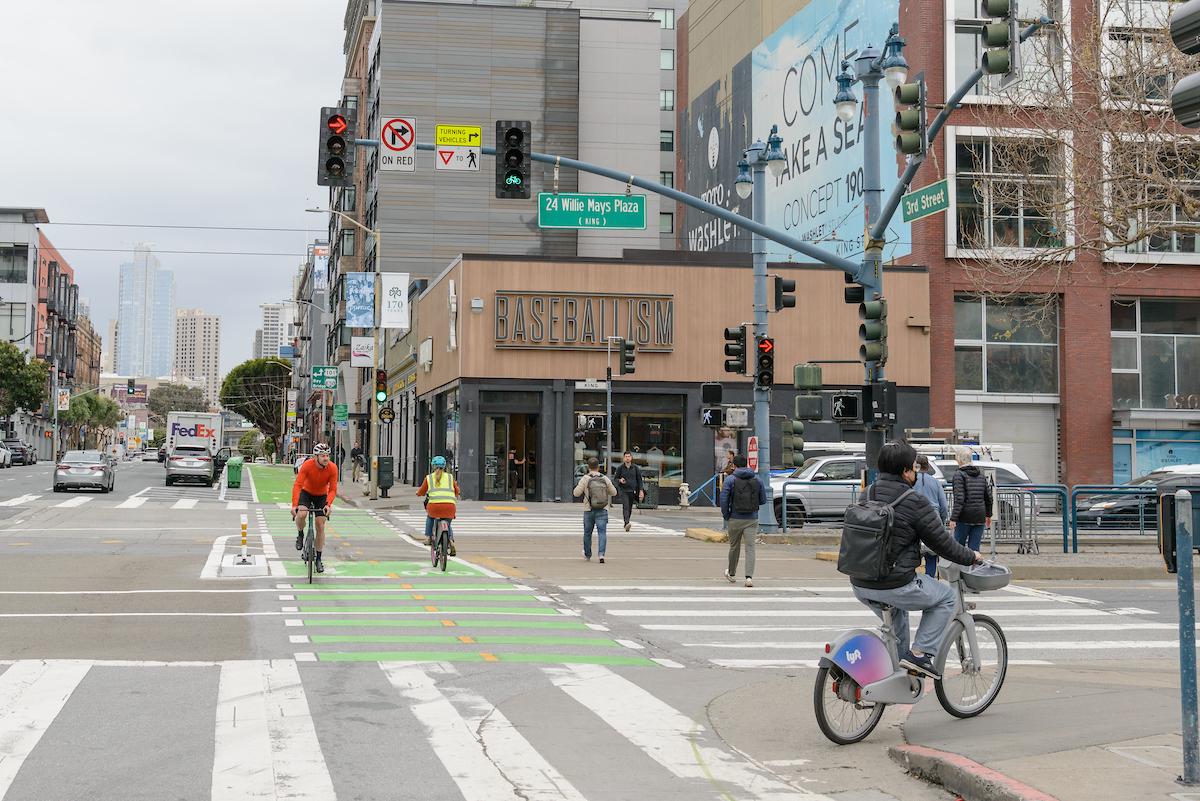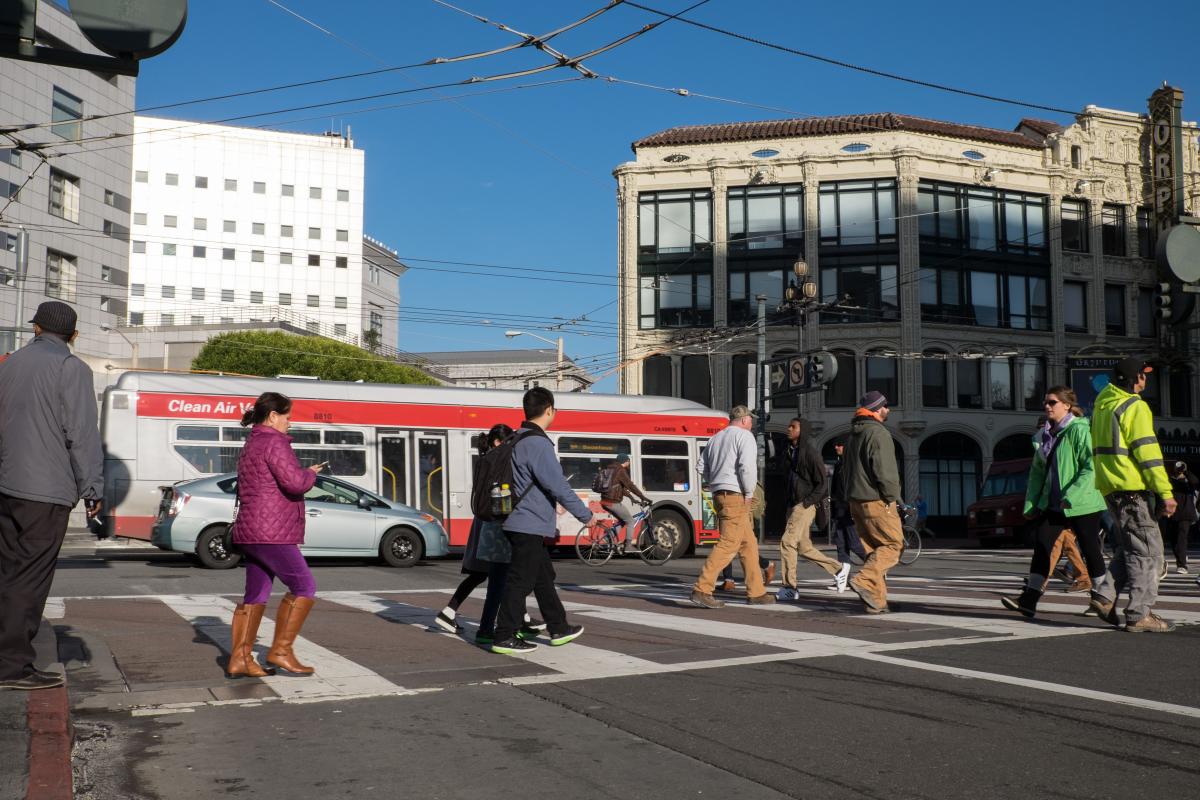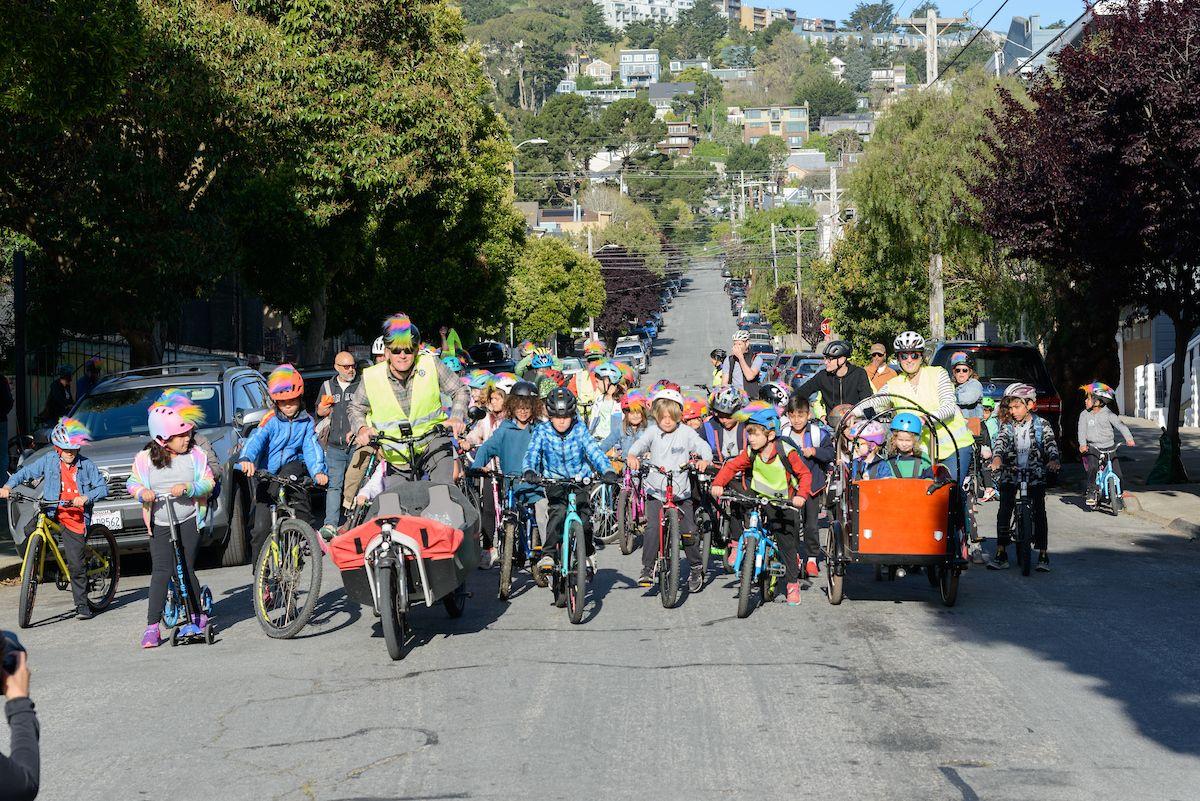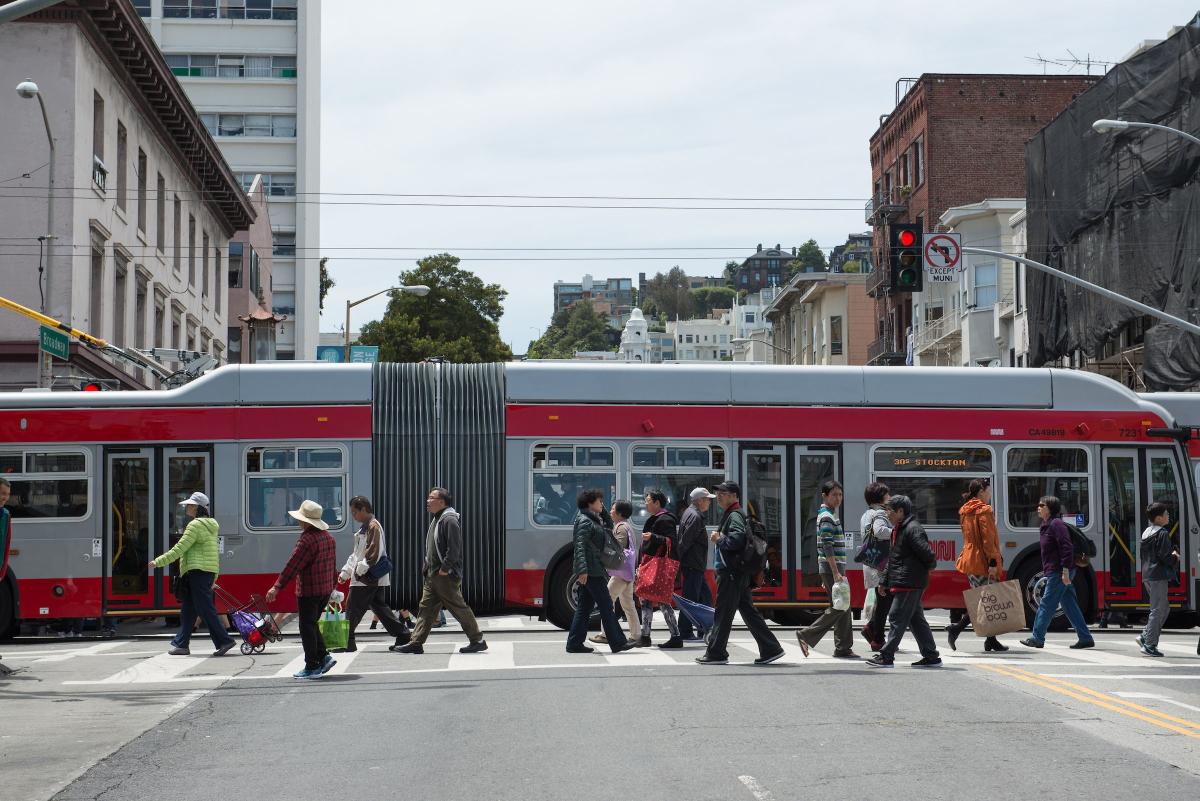
Vision Zero is the city’s policy to end traffic fatalities.
As we mark ten years since the launch of Vision Zero, we want to partner with you to shape the future of this traffic safety program.
This week, we published a Vision Zero 10-Year Report. It summarizes the work we’ve done since 2014 to prevent traffic deaths and reduce severe injuries. Last month, we launched summer outreach. We published our Help Us Shape What’s Next for Vision Zero blog to hear from you about next steps for the program.
We’ll be collecting feedback and priorities from the Vision Zero community through the end of August. We hope to hear from you and that this report will give you some ideas about what the program should prioritize next.
Vision Zero report highlights
Over the course of the last decade, San Francisco has developed and iterated on many tools to engineer our streets for safety.
More than 13,000 traffic safety treatments have been installed on San Francisco streets since Vision Zero began in 2014.
These safety treatments have been guided by hospital and police crash data that track equitable outcomes for some of our most vulnerable road users and populations.
The report describes these efforts, which include:
- Reducing speed limits
- Daylighting corners for visibility
- Painting high visibility crosswalks
- Programming traffic signals to give pedestrians a head start and more time to cross the street
- Pioneering the use of the High Injury Network methodology to identify the city streets responsible for most severe and fatal crashes
- Proactively implementing changes on the High Injury Network
- Analyzing data to track equitable outcomes for vulnerable road users and populations
- Developing a Quick-Build program of reversible and adjustable improvements that allow us to make streets safer quicker and at a more affordable cost.
- Implementing Quick-Build safety improvements on 34 streets across the city on the High Injury Network

Learn why speed safety cameras are coming to San Francisco – and how they’ve helped in other cities.
A glimpse of what's next: speed cameras to improve safety
The report also discusses some of what’s coming next.
For example, San Francisco is one of six California cities authorized to conduct a five-year study of Speed Safety Cameras. Assembly Bill 645 makes this possible.
Speed safety cameras are already used in over 200 U.S. cities. And we’re seeing great safety improvements. Data from these cities has shown almost 50% reductions in severe and fatal crashes.
In San Francisco, we will:
- Install and evaluate 33 cameras citywide
- Launch a multilingual education campaign so the public is aware of this new pilot program

We look forward to Vision Zero feedback from people who bike, roll, walk and drive.
Share your ideas for the next phase of Vision Zero
We also want to hear about your priorities for where the Vision Zero program should go from here. There are several ways to share your input this summer:
Online Survey
Take five minutes to fill out this online survey, which closes on Friday, August 30. We hope to hear your thoughts on a range of possibilities, including:
- Top traffic safety challenges
- Policy priorities
- Survey link: What's Next for Vision Zero SF survey - link in English
- This survey is also available in SPANISH. Click here to access the Spanish version.
- Esta encuesta también está disponible en Español. Haga clic aquí para acceder a la versión en Español.
- Esta encuesta también está disponible en Español. Haga clic aquí para acceder a la versión en Español.
- This survey is also available in CHINESE. Click here to access the Chinese version.
- 此民調也有中文版。 點擊此處訪問中文版。
- 此民調也有中文版。 點擊此處訪問中文版。
- This survey is also available in TAGALOG. Click here to access the Tagalog version.
- Ang survey na ito ay makukuha rin sa Tagalog. Mag-click dito upang ma-access ang bersyon ng Tagalog.
- This survey is also available in SPANISH. Click here to access the Spanish version.
SFMTA Board Chair virtual office hours
Meet with the SFMTA Board Chair, Amanda Eaken, and others to share your thoughts.
- Office hours are from 4-5 p.m. on the Monday before Tuesday SFMTA Board of Directors meetings.
- To make sure everyone has a chance to speak, each person will get two minutes to provide comments.
- Join online or call +1 415-523-2709,,385552077# Phone Conference ID: 385 552 077#
SFMTA Board Vision Zero Committee meetings
Join online or in-person to provide feedback. Meeting details and join information will be posted here: Vision Zero Meetings.
- Vision Zero Committee Meeting, August 27, 2024 - 1:00pm
SFMTA Headquarters; 1 S Van Ness Avenue, San Francisco, CA 94103
Union Square Conference Room, Floor 7
Listening Sessions and Outreach Events
Tell the Vision Zero team about your top priorities for the program.
Visit the Vision Zero table at any of these Biking and Rolling Plan Open Houses:
Attend one of our three Listening Sessions:
- Listening Session 1: Tuesday, Aug. 13, 5-7pm, Southeast Community Center, 1550 Evans Ave
- Listening Session 2: Thursday, Aug. 22, 6-8pm, SFMTA, 1 South Van Ness Ave, Corona Heights & Candlestick Conference Rooms, Floor 6
- Listening Session 3: TBD
Connect to one of our two Virtual Office Hours:
- Virtual Office Hour with the SFMTA 1: Thursday, Aug. 15, 6-7pm
Join online (Meeting ID: 246 458 108 45 & Passcode: Ls4G3T) or call +1 415-523-2709,,273395542# (Phone conference ID: 273 395 542#) - Virtual Office Hour with the SFMTA 2: Tuesday, Aug. 20, 12-1pm
Join online (Meeting ID: 211 009 184 171 & Passcode: gvsge5) or call +1 415-523-2709,,735879083# (Phone conference ID: 735 879 083#)
Share your thoughts via email to visionzerosf@sfmta.com. Make the subject of your email “Future Vision Zero Input.”

Your feedback will help us set priorities for the Vision Zero program.
How your input helps and what's next
While the goal of zero traffic fatalities remains the same, how we get there will be based on your feedback as well as on what we’ve learned is most effective.
We'll consolidate your feedback and suggestions from policymakers, peer cities and city officials to develop a set of clear outcomes and priorities on how San Francisco will get to zero.
Before the end of the year, we will share a progress update on what we’ve heard and how it is shaping what’s next for Vision Zero.
Learn more and get involved
Visit our Vision Zero signups webpage to learn more about the program and other opportunities to engage.